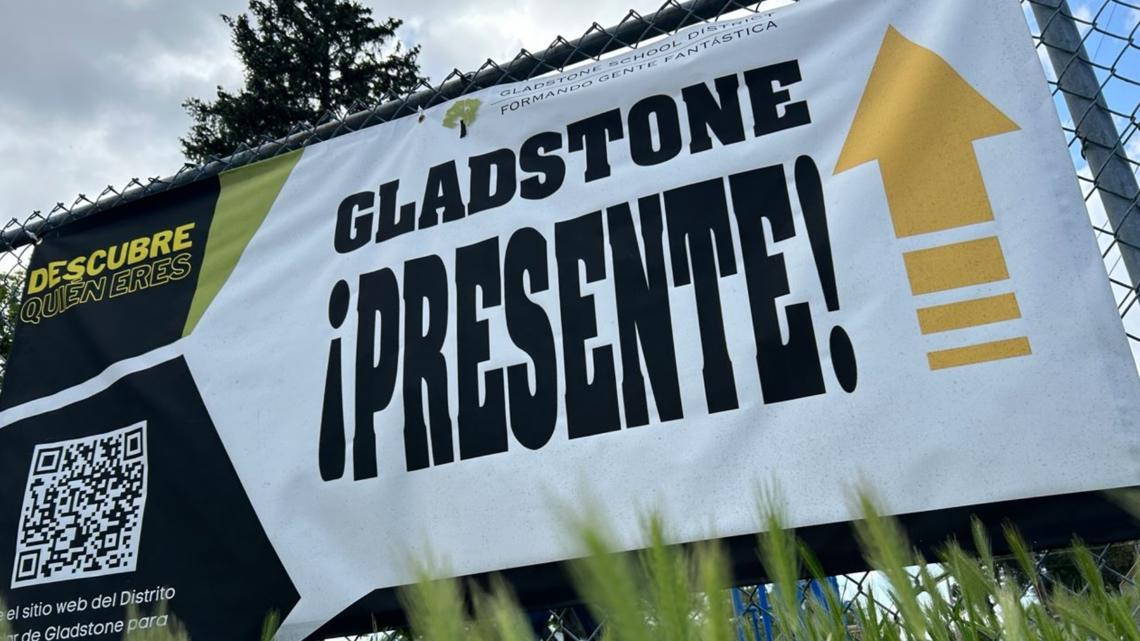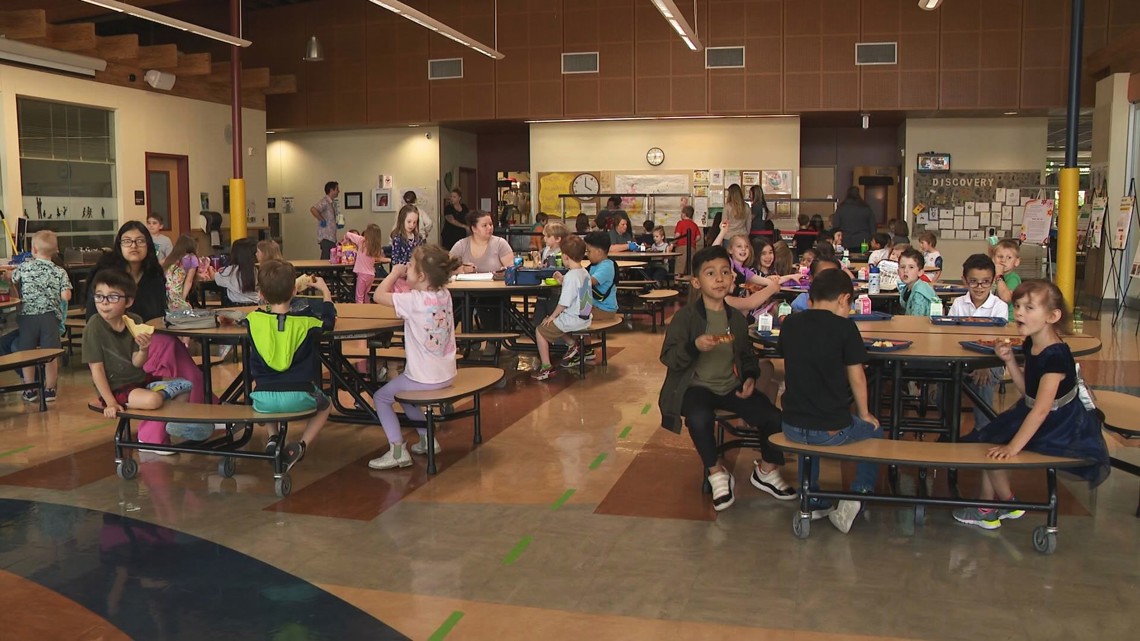GLADSTONE, Ore. — The Gladstone School District has taken an innovative, simple approach to solve a pervasive issue. Across Oregon schools, chronic absenteeism has soared in recent years following the pandemic.
Gladstone has seen its rate of chronically absent students drop 9% this year — from 35% to 26%. The district, which serves four schools in Clackamas County, added signage, t-shirts and banners to encourage high attendance.
"We just wanted to do anything that we possibly could,” said Ali Feuerstein, Gladstone School District’s student staff wellness coordinator.
Signs are in English and Spanish, as the district has recently seen a big rise in Spanish-speaking families, Feuerstein said.
"Having a bilingual campaign really tells our community that doesn't speak English, 'You're still welcome here,'" Feuerstein said.


The goal is to make school a more inclusive, comfortable setting. Early trends suggest the efforts are working. The campaign is also relatively inexpensive, costing just around $5,000, administrators said.
"How it came to fruition was nothing fancy,” said Jeremiah Patterson, the Gladstone School District assistant superintendent. “Just a bunch of yard signs, a bunch of posters, a bunch of T-shirts. And really consistent messaging in every school about how important it is to show up every day."
The school district has also found support from the Gladstone community.
"I have a yard sign in front of my house. I have all the t-shirts for the different schools," Michael Milch, the mayor of Gladstone, said. "It's an element of civic pride."
Milch is one of many community leaders embracing the message. Administrators credit the impact of community backing as a big part of the boom in attendance.


This comes on top of other initiatives Gladstone has had for years, like the Gladstone Center for Children and Families. Many four- and five-year-old kids regularly attend the center. In the same building there are health services, making the building a hub for families.
“It’s a place where people show up for many reasons,” Sarah Dunkin, the director of the center, said. “They show up for pediatric medical clinic appointments, for dental appointments.”


Though even for districts without a center for younger children, administrators believe a signage campaign can make a big impact.
“I know it seems incredibly simple,” Patterson said. “But I think maybe the simplicity is the key. Because we didn’t change anything else.”
The KGW Solutions Project is our commitment to report on ideas and strategies that address important issues in our community. We want to hear from you about solutions. Contact us at solutions@kgw.com.

